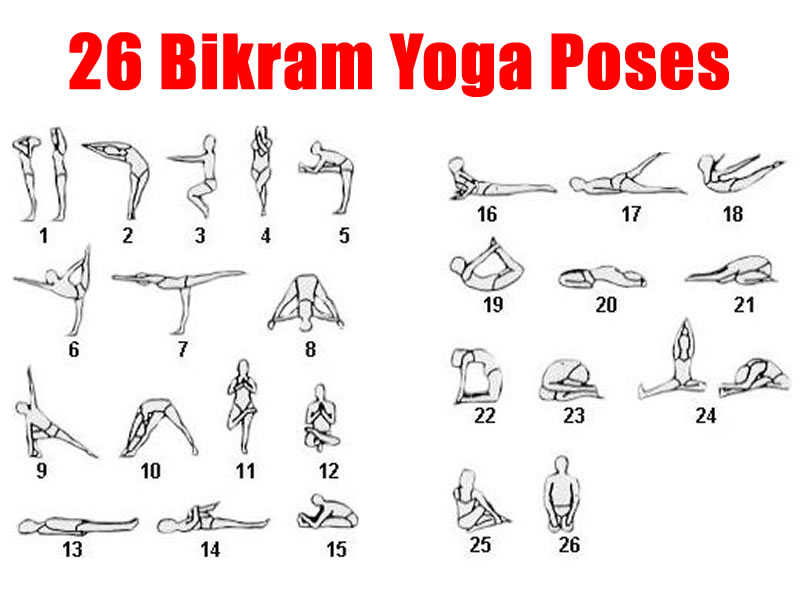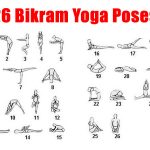You’re never too old, never too bad, never too late and never too sick to start from scratch once again.
– Bikram Choudhury
I am entering my third month of regularly practising Bikram Yoga, and am thrilled with the changes which are occurring in my body and my mind. With these changes, each time I practice Bikram, I feel I understand better why it is designed in such a way.
Inner Heat
Two weeks ago the studio where I practice Bikram had problems with its heating for about a week, which was a complete revelation.
I thought that it was the heat of Bikram Yoga which made me feel good, and that I get hot and sweaty since I am in a hot room. Without the heat, I learnt that I work my body really hard, and still get hot and sweaty, just not as much as if the heating was on at full capacity, and without it, my muscles ache the next day. Bikram creates an inner heat, the heat yogis talk about a lot, which I’d never noticed before because of the hotness of the room, which really does help my body work out without injury.
One size does fit all
As the above Bikram quote says above, this series is suitable for everyone. Bikram says in his book, Bikram Yoga, that he put together the 26 asanas of the basic series in this specific sequence so that every part of the body, internal organs, veins, ligaments and muscles are systematically worked.
As, part of my British Wheel of Yoga training, we talked a lot about planning sessions, But, the thing is, the teachers don’t necessarily know who is coming, or what their students’ strengths and weaknesses are, so Bikram has been quite smart and planned a sequence to systematically extend and contract every muscle in the body regardless of the individual.
Sivananda has a basic series too which I have always used and loved – headstand, shoulderstand, plough are some of my favourites. However, Bikram is more energetic, and has made it easier for me to get a stronger core and legs with the standing poses, which has helped my legs and mind, and then the core strengthening ones like locust pose or salabhasana. Sivananda has locust too but if I am by myself practising, sometimes I skip it because it is hard and because I don’t do it well, which is just a mental thought pattern I am learning to break. The other day when I couldn’t get to class, I performed salabhasana in my home practice and was very glad I did.
Like a flower petal blooming
I said before, that the script drove me bonkers. Now, it has become my friend. Sometimes, I have no idea what it is on about but I hang on its every word and as I follow what it says, I find that yes I am rolling up like a Japanese ham sandwich, or I lean back, fall back, go back, way back, more back. And, I love the opening words of pranayama guidance: Concentrate, meditate. It puts me in the right frame of mind with my happy smiling face, and I lock the knee, lock the knee, lock the knee.
I have stopped wishing for the script to be anything but what it is. I enjoy it now, which is a great lesson. I have learnt a non-attachment but mindful attention to it and from that positive frame of mind, I listen without judgement and appreciate everything it has to teach me.
Staying on my mat
I don’t exactly enjoy it when people on the mat next to me blow their noses and leave their tissue scraps all over the floor between our mats. However, I am learning that in these situations, I need to relax. It is awful having a cold and runny nose. They are not doing it on purpose, and they are not doing it on my mat. I really don’t have to focus on their snot rags nor have an opinion about it.
I am learning a little bit, as Byron Katie says, to welcome the thoughts I have about these situations so that I can demonstrate to myself that I don’t need to be up in someone else’s colds, yoga practice, life. Where I should be, and need to be, is on my mat, doing my yoga, for my health, and my sanity. I stay on my mat and I get right on up in my practice, life, and health.
Once on my mat, I use the sequence to see where I have tightness, for example in my hips, which means that I struggle a little in Tree pose, or Vrkasana. I can also see where I have advanced, for example, in Standing Head to Knee Pose (Dandayamana-Janushirasana). Previously I only went as far as just lifting my knee up in my hands and practising my firm foundation and locked knee. The past couple of weeks I have been able to extend my leg and nearly lock that knee too. On the days, I can’t do it well, it really is because I am not focused enough on myself, my knees, my breathing.
The gift of time
Previously, I used to think that Bikram took up so much time, but since adopting a regular practice, it has given me so much time. I have:
- Time, just for me.
- Time, without the constant chatter in my head.
- Time, where no one can contact me.
- Time, where I learn all about my mind and body.
- Time, which leaves me feeling very good.
And, I have so much more energy which lets me stay up late and do all the things I used to think I would never have the time to do.
Bikram yoga might take time and energy to do, but it gives me so much more time and energy than I ever remember having. I am so grateful.




2 comments